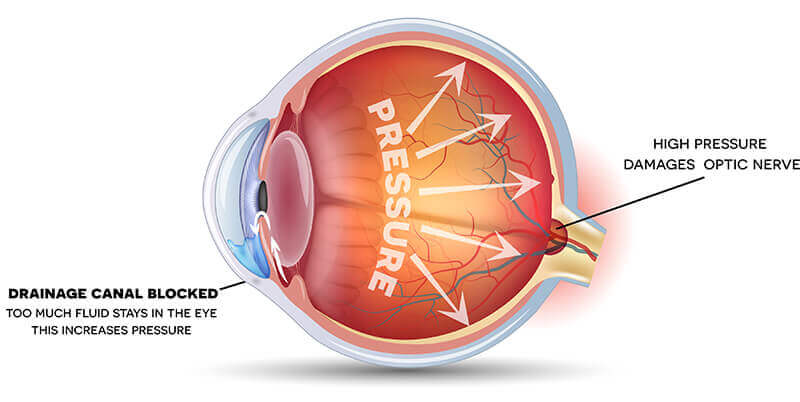Glaucoma
Glaucoma is a disease that damages your eye’s optic nerve. Glaucoma is a leading cause of blindness in the United States for patients over 60 years of age. Many people with glaucoma have no symptoms. Having regular eye examinations can help detect and begin treatment for glaucoma before you lose vision.
Causes of Glaucoma
In the healthy eye, a clear liquid (aqueous humor) constantly circulates inside the front portion of your eye and through a microscopic drain. If drainage is abnormal, the eye pressure can become too high for the health of your optic nerve resulting in optic nerve damage. The optic nerve acts like a cable that sends the light information from the back of the eye to the brain as an image. Damage to the optic nerve can lead to permanent vision loss.
Types of Glaucoma
- Open-angle glaucoma – the most common type.
- Normal-tension (low tension) glaucoma.
- Angle–closure glaucoma (narrow or acute angle glaucoma)
- Congenital glaucoma.
- Secondary glaucoma.
- Glaucoma suspect (pre-glaucoma)

Open-Angle Glaucoma
- This is the most common form of glaucoma. Most patients have no symptoms and normal vision in the early stages but over time as optic nerve damage progresses blind spots, loss of peripheral vision (tunnel vision) and blindness can result.
Normal or Low Tension Glaucoma
- Similar to open angle glaucoma but optic nerve damage and visual loss occurs even though the eye pressure remains consistently “normal” or below 21 mm of mercury.
Angle-Closure Glaucoma (Narrow or Acute Angle-Closure Glaucoma)
- Abnormal iris architecture blocks the drainage angle and if sudden, can cause a rapid rise in the eye pressure, suddenly and permanently damaging the optic nerve. Symptoms include eye pain and redness, headache, haloes, nausea and vomiting. Angle closure glaucoma is a true eye emergency and must be treated immediately to avoid blindness.
- Chronic angle closure can also occur with a gradual and painless rise in pressure that can be similarly damaging to the eye nerve.
Secondary Glaucoma
- This is a glaucoma that results from another eye condition or disease. The most common forms of secondary glaucoma include pseudoexfoliation glaucoma, pigmentary glaucoma and neovascular glaucoma. Injuries, inflammation, tumors and long term steroid use are other causes of secondary glaucoma.
Who is at risk for Glaucoma?
People with one or more of the following are at greater risk of developing glaucoma.
- Age over 40 years
- Elevated eye pressure
- Family history
- Heritage – African-American, Hispanic, Asian
- Medical conditions such as diabetes mellitus, hypertension, poor circulation, sleep apnea
- Past eye injuries
- Thin central cornea
- Farsightedness or nearsightedness
- Pre-existing thinning of the optic nerve
